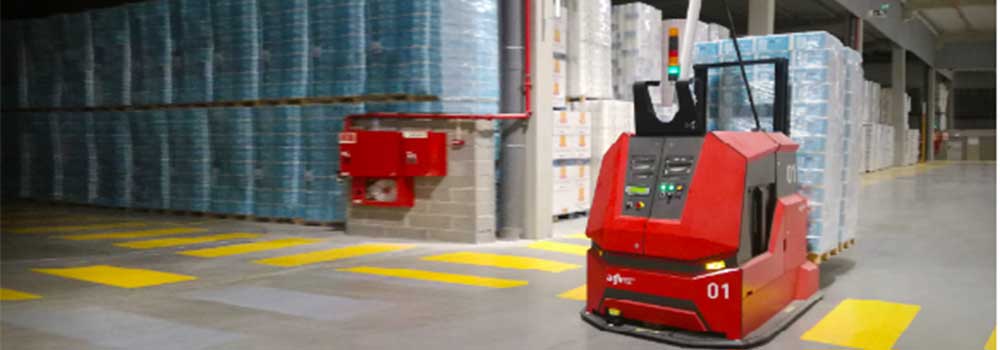Material handling is the process of moving, storing, archiving, protecting, and controlling materials. Automated material handling equipment is what the name suggests- they are the automatic machines that can do the material handling automatically. They are used mostly inside factories, warehouses, and similar facilities to move materials. Automated material handling equipment examples include industrial trucks, AGVs, robots, conveyors, cranes, etc.
Different Types of Automated Material Handling Equipment
There are lots of different types of automated equipment available. We’ll talk about 4 types.
Conveyors

Conveyors are a large family of material transport equipment that is designed to move big bulky objects and materials in big quantities or volumes over fixed paths. They are most used in production facilities and transportation and logistics industry but we can see them in other industries as well, e.g. airport lounges, big retailer shops, etc. Conveyors come in different types, too. For example, roller conveyors consist of a series of rollers that are perpendicular to the direction of travel, Skate wheel conveyors use skate wheels instead of rollers, Belt conveyors use a continuous loop with forwarding path to move loads.
Automated Guided Vehicles (AGV)

AGVs are a type of material handling system that uses independently operated, self-propelled vehicles that are guided along predefined pathways. They are used in almost every industry, e.g. paper, metal, manufacturing, etc. They have guidance circuits that connect them with various workstations in the warehouse. They have different types, too. For example, driverless trains that consist of towing vehicles that are the AGVs that pull and one or more trailers form a train. Pallet trucks are backed into a loaded pallet by workers and then it’s elevated from the floor. Unit load carriers are used to move light loads, say up to 250kg, to move unit loads from one station to the other.
The Usefulness of Automated Material Handling Equipment

There are a lot of useful uses for using automated material handling equipment. Both from the employer and employees’ perspectives. Using automated equipment reduces labor costs because you will need less labor. You can also mitigate the effect of labor shortage and decrease routine manual and clerical works. Using automated machines will improve worker safety and improve the quality of the products. It will also decrease the manufacturing lead time. You cannot do some things with manual machines but with automated machines you can do those things.
Disadvantages of Automated Material Handling Equipment
Although they are very useful, automated material handling equipment have some disadvantages, too. They lack flexibility and they are vulnerable to downtime whenever there is a breakdown. You have additional maintenance staff and therefore cost. You will also incur the cost of auxiliary equipment.
Conclusion
We know that every equipment has some pros and cons and automated material handling equipment is no different but even though they do have some disadvantages, it’s safe to say that they have more advantages than they have disadvantages. They make our lives easier.


